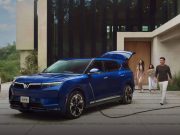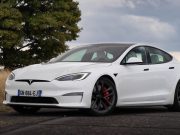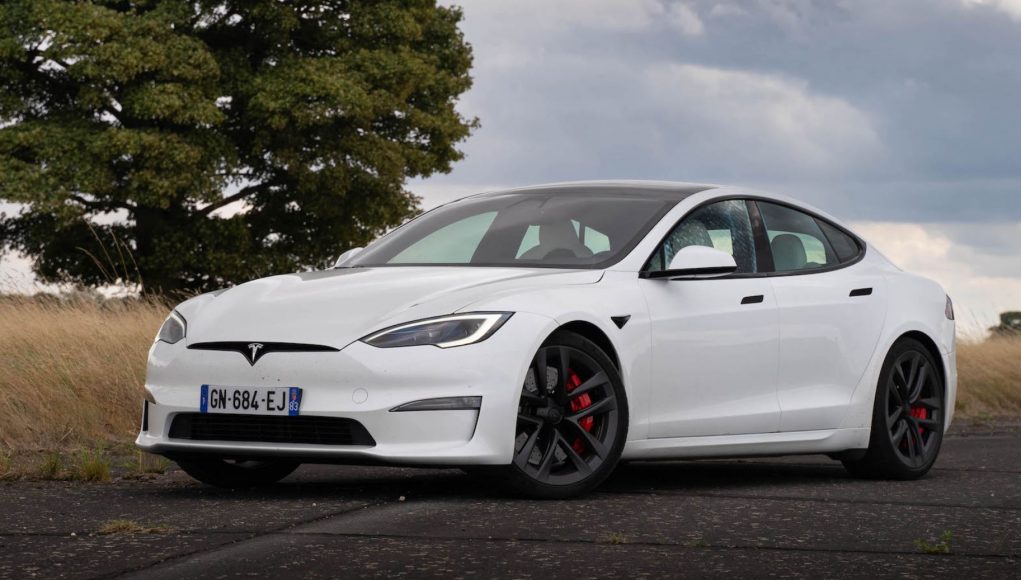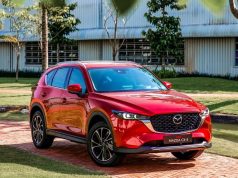The sedan has been a cornerstone of the automotive industry for decades, symbolizing a blend of practicality, comfort, and style. As one of the most popular car body types worldwide, sedans have evolved to meet the diverse needs of drivers, from daily commuting to luxury travel. This comprehensive guide aims to provide a detailed and easy-to-understand exploration of what a sedan car is, its characteristics, types, and why it continues to be a preferred choice for many.
Introduction
A sedan is a type of passenger car that features a three-box configuration with separate compartments for the engine, passengers, and cargo. Designed to offer a comfortable and smooth driving experience, sedans typically accommodate four to five passengers and have four doors. Despite the rising popularity of SUVs and crossovers, sedans remain a significant segment in the automotive market due to their balanced combination of efficiency, performance, and affordability.
Definition and Characteristics of a Sedan
What Exactly Is a Sedan?
A sedan is defined by several key characteristics that distinguish it from other vehicle types:
- Three-Box Design: This refers to the car’s structure being divided into three distinct sections:
- Engine Compartment: Located at the front of the car.
- Passenger Cabin: The central area where the driver and passengers sit.
- Cargo Trunk: An enclosed space at the rear for storing luggage and other items.
- Four Doors: Sedans are equipped with two front doors and two rear doors, providing easy access to both the front and back seats.
- Fixed Roof: The roof extends seamlessly from the windshield to the rear window without interruption, offering full protection from the elements.
- Seating Capacity: Most sedans comfortably seat up to five passengers, with two in the front and three in the rear.
Key Characteristics in Detail
- Lower Ground Clearance: Sedans are designed closer to the ground compared to SUVs or trucks. This lower center of gravity enhances stability and handling, especially during turns and at higher speeds.
- Enclosed Trunk: Unlike hatchbacks or SUVs, sedans have a separate trunk compartment that is fully enclosed and isolated from the passenger cabin. This design offers added security and keeps luggage out of sight.
- B-Pillars: These are the vertical supports located between the front and rear doors. They provide structural integrity to the vehicle and are a defining feature of sedans.
- Aerodynamic Shape: Sedans typically have a sleek and streamlined profile, which reduces air resistance and improves fuel efficiency.
- Comfort-Oriented Suspension: The suspension systems in sedans are tuned to absorb road imperfections, providing a smooth and comfortable ride for passengers.
Evolution of the Sedan
Historical Background
- Early Beginnings: The term “sedan” originated in the early 20th century. It was derived from the Italian word “sedia,” meaning “chair,” and was used to describe enclosed carriages. As automobiles became more prevalent, the sedan emerged as a popular body style due to its enclosed passenger compartment, offering protection from weather and road conditions.
- Post-World War II Era: Sedans became the quintessential family car, emphasizing practicality and reliability. Manufacturers like Ford and Chevrolet dominated the market with models like the Ford Crown Victoria and Chevrolet Bel Air.
Changes Over Time
- 1980s and 1990s: The automotive industry saw significant advancements in technology and design. Sedans like the Toyota Camry and Honda Accord gained popularity for their reliability, fuel efficiency, and affordability. These models set new standards for what consumers expected from a family car.
- 2000s Onwards: The introduction of luxury and sports sedans expanded the market. Manufacturers began incorporating advanced technologies such as navigation systems, premium audio, and safety features. Designs became more aerodynamic, and performance enhancements were introduced to appeal to a broader audience.
Modern Developments
- Design Innovations: Contemporary sedans feature sleeker lines, LED lighting, and grille designs that give them a more aggressive and modern appearance. The incorporation of coupe-like rooflines adds to their aesthetic appeal without compromising interior space.
- Technological Advancements: Today’s sedans come equipped with touchscreen infotainment systems, smartphone integration (Apple CarPlay and Android Auto), advanced driver-assistance systems (ADAS) like adaptive cruise control, lane-keeping assist, and automatic emergency braking.
- Environmental Considerations: With growing concerns about the environment, manufacturers are introducing hybrid and electric sedans to reduce emissions and improve fuel economy.
Types of Sedans
Sedans come in various shapes and sizes, each catering to different preferences and needs. Below is a detailed exploration of the different types of sedans, along with examples and descriptions.
1. Compact Sedans
Description: Compact sedans are small, economical cars designed for efficiency and ease of maneuverability, especially in urban environments. They are ideal for individuals or small families looking for affordable transportation without sacrificing comfort.
Key Features:
- Fuel-efficient engines, often four-cylinder.
- Easy to park and navigate through city traffic.
- Lower purchase and maintenance costs.
Examples and Detailed Descriptions:
- Honda Civic Sedan:
- Engine Options: Offers a range of efficient engines, including a 2.0-liter four-cylinder and a turbocharged 1.5-liter.
- Interior: Modern cabin with quality materials, ample legroom for a compact car, and a generous trunk space.
- Technology: Equipped with a touchscreen infotainment system, Bluetooth connectivity, and available Honda Sensing safety suite.
- Toyota Corolla Sedan:
- Engine Options: Features a 1.8-liter engine known for reliability and efficiency.
- Interior: Comfortable seating for five, with a focus on ergonomics and user-friendly controls.
- Technology: Comes standard with Toyota Safety Sense, including pre-collision warning and adaptive cruise control.
2. Mid-Size Sedans
Description: Mid-size sedans offer a balance between the compact and full-size categories, providing more interior space and comfort while remaining fuel-efficient and easy to handle.
Key Features:
- More powerful engines, including four-cylinder and V6 options.
- Spacious interiors with enhanced comfort features.
- A blend of performance, efficiency, and value.
Examples and Detailed Descriptions:
- Toyota Camry:
- Engine Options: Available with a 2.5-liter four-cylinder or a 3.5-liter V6 for more power.
- Interior: High-quality materials, supportive seats, and a roomy back seat suitable for adults.
- Technology: Features Entune infotainment system, Wi-Fi hotspot, and a comprehensive suite of safety features.
- Honda Accord:
- Engine Options: Offers a turbocharged 1.5-liter or 2.0-liter engine, plus a hybrid variant.
- Interior: Known for its spacious cabin, upscale feel, and large trunk space.
- Technology: Includes an intuitive infotainment system with an 8-inch touchscreen, Apple CarPlay, Android Auto, and Honda Sensing safety technologies.
3. Full-Size Sedans
Description: Full-size sedans are larger vehicles that prioritize passenger comfort and cargo space. They are often chosen by families and business professionals who value a roomy interior and a smooth ride.
Key Features:
- Spacious interiors with ample legroom and headroom.
- Powerful engines, typically V6 or V8.
- Enhanced comfort features like leather seats and advanced climate control.
Examples and Detailed Descriptions:
- Chevrolet Impala:
- Engine Options: Comes with a 2.5-liter four-cylinder or a 3.6-liter V6 engine.
- Interior: Offers a quiet cabin, comfortable seating for five adults, and a large trunk.
- Technology: Equipped with Chevrolet MyLink infotainment, an 8-inch touchscreen, and available 4G LTE Wi-Fi hotspot.
- Chrysler 300:
- Engine Options: Features a standard 3.6-liter V6 and an optional 5.7-liter HEMI V8 for increased performance.
- Interior: Luxurious appointments, spacious seating, and customizable ambient lighting.
- Technology: Includes Uconnect infotainment system, smartphone integration, and advanced safety features.
4. Luxury Sedans
Description: Luxury sedans focus on providing the highest level of comfort, performance, and advanced technology. They often feature premium materials, powerful engines, and cutting-edge innovations.
Key Features:
- High-quality interiors with leather, wood, or metal accents.
- Advanced driver-assistance systems and safety features.
- Smooth and powerful performance with refined engines.
Examples and Detailed Descriptions:
- Mercedes-Benz E-Class:
- Engine Options: Offers a range of engines from a turbocharged four-cylinder to AMG performance variants.
- Interior: Exudes luxury with fine materials, customizable ambient lighting, and ergonomic seating.
- Technology: Equipped with the latest MBUX infotainment system, voice control, and a digital instrument cluster.
- BMW 5 Series:
- Engine Options: Includes turbocharged four-cylinder, six-cylinder, and V8 engines, plus a plug-in hybrid.
- Interior: Combines luxury and sportiness with high-quality finishes and driver-focused design.
- Technology: Features iDrive infotainment, gesture control, and advanced safety systems like adaptive cruise control.
5. Sports Sedans
Description: Sports sedans blend the practicality of a sedan with high-performance capabilities. They are designed for driving enthusiasts who desire speed, agility, and responsive handling without sacrificing everyday usability.
Key Features:
- Powerful engines, often turbocharged or supercharged.
- Sport-tuned suspensions and performance brakes.
- Aggressive styling cues and aerodynamic enhancements.
Examples and Detailed Descriptions:
- BMW M3:
- Engine Options: Powered by a twin-turbocharged 3.0-liter inline-six engine producing over 470 horsepower.
- Performance: Accelerates from 0-60 mph in around 4 seconds, with precise handling and rear-wheel drive.
- Interior: Sport seats, M-specific instrumentation, and high-quality materials.
- Audi S4:
- Engine Options: Equipped with a turbocharged 3.0-liter V6 engine delivering 349 horsepower.
- Performance: Features Audi’s Quattro all-wheel-drive system for enhanced traction and handling.
- Interior: Luxurious cabin with sporty accents, virtual cockpit display, and advanced infotainment.
6. Electric and Hybrid Sedans
Description: These sedans utilize electric motors or a combination of an internal combustion engine and electric motor to improve fuel efficiency and reduce emissions.
Key Features:
- Environmentally friendly with lower emissions.
- Potential cost savings on fuel.
- Quiet and smooth operation.
Examples and Detailed Descriptions:
- Tesla Model S:
- Performance: Offers impressive acceleration, with some models achieving 0-60 mph in under 2 seconds.
- Range: Provides over 400 miles of electric range on a single charge.
- Technology: Features a minimalist interior with a large touchscreen, Autopilot capabilities, and over-the-air updates.
- Toyota Camry Hybrid:
- Engine Options: Combines a 2.5-liter four-cylinder engine with an electric motor.
- Fuel Efficiency: Achieves up to 52 mpg combined, making it one of the most fuel-efficient sedans.
- Features: Maintains the comfort and practicality of the standard Camry with added efficiency.
Sedan vs. Other Car Body Types
Understanding how sedans compare to other vehicle types can help you decide if a sedan is the right choice for you.
Sedan vs. Hatchback
Sedan:
- Trunk: Separate, enclosed trunk not accessible from the passenger cabin.
- Style: Sleek, elongated profile with a clear distinction between the cabin and trunk.
- Cargo Space: Fixed space, less flexible for oversized items.
Hatchback:
- Trunk: Cargo area is part of the passenger cabin, accessible via a rear hatch door.
- Style: Compact with a rear slope integrating the cargo space.
- Cargo Space: More versatile, rear seats can be folded down to increase capacity.
| Aspect | Sedan | Hatchback |
|---|---|---|
| Trunk Access | Separate, enclosed trunk accessed via a rear lid | Cargo area accessed through a rear door that includes the window |
| Design | Sleek profile with a fixed roofline | Compact with a rear slope that integrates cargo space |
| Cargo Space | Limited flexibility, fixed trunk space | Flexible cargo area with foldable rear seats |
| Examples | Toyota Camry, Honda Accord | Volkswagen Golf, Ford Focus |
Which to Choose: If you need flexibility for carrying larger or irregularly shaped items, a hatchback may be more suitable. If you prefer a traditional look and secure, separate trunk space, a sedan is ideal.
Sedan vs. Coupe
Sedan:
- Doors: Four doors, providing easy access to both front and rear seats.
- Seating: Comfortably seats up to five passengers.
- Practicality: Emphasizes convenience and family use.
Coupe:
- Doors: Two doors, with longer front doors for access to rear seats.
- Seating: Typically seats two to four passengers, rear seats may be cramped.
- Style: Sportier appearance with a sloping roofline.
| Aspect | Sedan | Coupe |
|---|---|---|
| Doors | Four doors | Two doors |
| Seating | Seats four to five passengers | Typically seats two to four passengers |
| Style | Emphasis on comfort and practicality | Sportier appearance with a sloping roofline |
| Examples | BMW 3 Series Sedan | BMW 4 Series Coupe |
Which to Choose: If you prioritize style and don’t often carry rear passengers, a coupe offers a sporty aesthetic. For practicality and ease of access, especially for families, a sedan is the better option.
Sedan vs. SUV
Sedan:
- Ground Clearance: Lower, providing better handling and fuel efficiency.
- Driving Experience: Car-like ride with responsive handling.
- Fuel Economy: Generally better due to lighter weight and aerodynamics.
SUV:
- Ground Clearance: Higher, suitable for off-road and poor road conditions.
- Space: More interior and cargo space, often with the ability to tow.
- Seating: Can accommodate more passengers, especially in three-row models.
| Aspect | Sedan | SUV |
|---|---|---|
| Ground Clearance | Lower, optimized for on-road performance | Higher, suitable for off-road and varied terrains |
| Cargo Space | Enclosed trunk with limited capacity | Larger cargo area with foldable seats |
| Seating Position | Lower seating position | Elevated driving position |
| Examples | Honda Accord | Honda CR-V |
Which to Choose: If you need more space, higher seating position, and versatility for different terrains, an SUV is appropriate. For better fuel economy and a more engaging driving experience on paved roads, a sedan is preferable.
Advantages and Disadvantages of Sedans
Advantages
- Fuel Efficiency: Sedans are typically lighter and more aerodynamic than larger vehicles, leading to better gas mileage and lower fuel costs.
- Handling and Stability: The lower center of gravity in sedans contributes to improved handling, making them easier to maneuver, especially in tight city streets.
- Comfort: Sedans often provide a smooth and quiet ride, with comfortable seating and sufficient space for passengers.
- Affordability: Generally, sedans are less expensive to purchase, insure, and maintain compared to larger vehicles like SUVs or trucks.
- Safety: Sedans come equipped with a range of safety features and have lower rollover risk due to their design.
Disadvantages
- Limited Cargo Space: The fixed trunk space may not be sufficient for large or bulky items.
- Less Versatility: Sedans are not ideal for towing or off-road driving.
- Lower Seating Position: Some drivers prefer the higher seating position of SUVs for better visibility.
- Ground Clearance: The lower height can be a disadvantage on rough roads or during severe weather conditions like flooding.
Trends in the Sedan Market
Shift Towards SUVs and Crossovers
- Market Impact: The popularity of SUVs and crossovers has led to a decline in sedan sales, especially in markets like North America.
- Reasons for Shift:
- Versatility: SUVs offer more cargo space and can handle various terrains.
- Perceived Safety: Higher driving position and larger size give a sense of safety.
- Lifestyle Appeal: Marketing often associates SUVs with adventure and active lifestyles.
Electric and Hybrid Sedans
- Environmental Focus: With increasing environmental awareness, there’s a growing demand for vehicles with lower emissions.
- Manufacturer Response:
- Tesla Model S: Pioneered the luxury electric sedan market with high performance and long-range capabilities.
- Toyota Prius: Popularized hybrid technology, offering exceptional fuel economy.
- Benefits:
- Cost Savings: Lower fuel costs and potential tax incentives.
- Reduced Emissions: Contribute to cleaner air and reduced carbon footprint.
Technological Advancements
- Connectivity:
- Infotainment Systems: Touchscreen interfaces with navigation, entertainment, and vehicle settings.
- Smartphone Integration: Apple CarPlay and Android Auto allow seamless use of apps and features.
- Safety Features:
- Driver-Assistance Systems: Adaptive cruise control, blind-spot monitoring, and automatic emergency braking enhance safety.
- Advanced Airbag Systems: Protect occupants in various types of collisions.
- Consumer Expectations:
- Buyers now expect modern sedans to come equipped with the latest technology and convenience features.
Future of Sedans
Adoption of Electric Vehicle (EV) Technology
- Industry Direction: Many manufacturers are committing to electrifying their sedan lineups to meet regulatory requirements and consumer demand.
- Notable Models:
- Lucid Air: A luxury electric sedan boasting high performance and cutting-edge technology.
- BMW i4: Combines BMW’s driving dynamics with electric efficiency.
- Challenges:
- Infrastructure: Availability of charging stations remains a concern.
- Cost: Electric sedans can be more expensive upfront compared to their gasoline counterparts.
Focus on Design and Luxury
- Competing with SUVs: To retain market share, sedans are being designed with more luxurious features and eye-catching aesthetics.
- Customization:
- Offering a variety of trims, color options, and packages to cater to individual preferences.
- Enhanced Comfort:
- Improved sound insulation, premium materials, and advanced climate control systems enhance the driving experience.
Evolving Market Demand
- Global Variations:
- In regions like Europe and Asia, sedans remain popular due to narrower roads and higher fuel costs.
- Adapting to Change:
- Manufacturers are focusing on niche markets and special editions to appeal to specific customer segments.
- Potential Resurgence:
- Innovative designs and technologies may revive interest in sedans among consumers seeking alternatives to SUVs.
Conclusion
Sedans continue to play a vital role in the automotive industry, offering a harmonious blend of efficiency, comfort, and style. While they face stiff competition from SUVs and crossovers, sedans adapt by embracing new technologies, improving fuel efficiency, and enhancing luxury features. For drivers who value a smooth driving experience, better fuel economy, and a vehicle that is easy to handle, sedans remain an attractive option.
FAQs
What is the main purpose of a sedan?
A sedan is designed to provide comfortable and efficient transportation for individuals and families. It emphasizes practicality, with a focus on delivering a smooth ride, ample passenger space, and ease of use for daily commuting or long-distance travel.
Why are sedans more fuel-efficient than SUVs?
Sedans are generally lighter and have a more aerodynamic shape compared to SUVs. This design reduces air resistance and energy required to propel the vehicle, resulting in better fuel efficiency. Additionally, sedans often have engines optimized for economy rather than power needed for towing or off-road capability.
Which sedan models are known for reliability?
Several sedan models are renowned for their reliability, including:
- Toyota Camry: Known for its longevity and low maintenance costs.
- Honda Accord: Praised for its durable construction and dependable performance.
- Nissan Altima: Recognized for its solid reliability ratings and comfortable ride.
- Subaru Legacy: Offers reliability with the added benefit of standard all-wheel drive.
What is the difference between a sedan and a hatchback?
The primary difference lies in the design of the rear cargo area:
- Sedan: Features a separate, enclosed trunk compartment that is not accessible from the passenger cabin.
- Hatchback: Has a rear door (hatch) that opens upward, providing direct access to the cargo area, which is part of the main cabin. This design allows for more versatile cargo space, especially when rear seats are folded down.
Are sedans safer than other car types?
Sedans offer a range of safety features comparable to other vehicle types. Their lower center of gravity reduces the risk of rollovers compared to taller vehicles like SUVs. Safety ultimately depends on the specific model, its construction, and the safety equipment included. Many sedans have received high safety ratings from organizations like the National Highway Traffic Safety Administration (NHTSA) and the Insurance Institute for Highway Safety (IIHS).
Related Reading:
- If you’re interested in learning more about different car types and their unique features, consider reading our article on What Does SUV Stand For?













